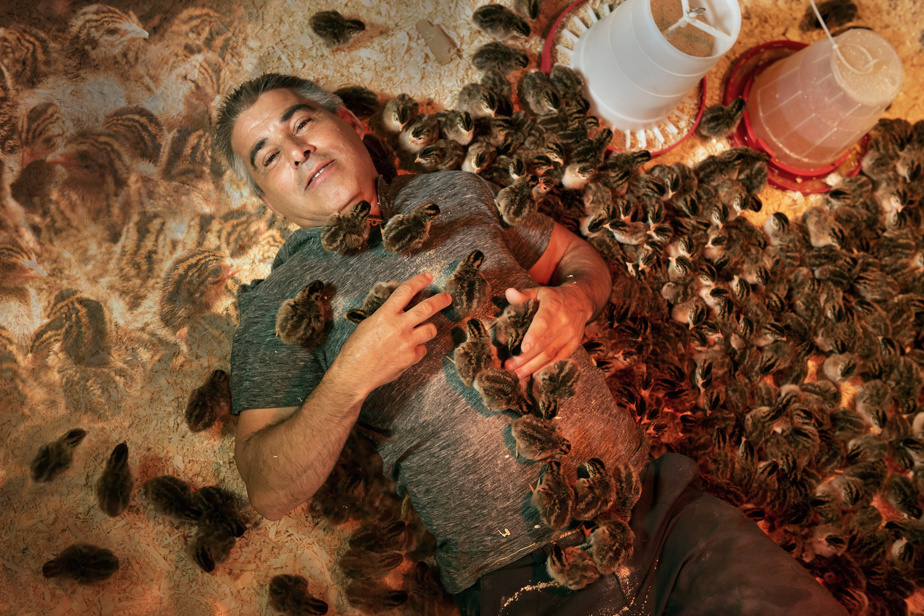“I have always liked to go towards people who are far from the spotlight, who are not in the public square,” explains photographer Isabelle de Blois, who found it very interesting to see images of cows, pigs, strawberries on agricultural buildings, but who really wanted to see who was hiding inside. Especially since we were at the height of the promotion of local purchasing, and we were talking about food sovereignty, we might as well see who is at the very beginning of the chain.
“As a portrait painter,” she says, “I told myself that we had to create a link between the community and the farmers. »
So to meet them, these mysterious farmers, we had to knock on farm doors. Isabelle de Blois focused on her region and the MRC de L’Érable supported her project. She had a scholarship from the Conseil des arts et des lettres du Québec in hand, and a lot of audacity.
“I tried to have as wide a range as possible,” she relates. Some families were the seventh generation of producers. They told me their story, that of these generations of women who took back and saved the land, saved the farm. Besides that, I have agricultural producers who have only been established for a year. »
There is also a variety of production, from pork to cereals, from mushrooms to cabbages.
Although it had to endure a few refusals, the participating farmers were enthusiastic, unsuspecting even though it was clear from the start that it was an artistic project rather than a documentary.
“People trusted me a lot,” she says. I told them I was going to add a formal dimension, but they didn’t know exactly what. » Sometimes the additions are symbolic; others, metaphorical.
Some photos depict the life of farmers in their daily work.
A guinea fowl producer had just received 400 guinea fowl aged… one day old, when he met Isabelle de Blois. The opportunity was so good: the producer agreed to lie down in his enclosure and the tiny guinea fowl climbed on top of him. The photographer immortalized the scene.
The models had a lot of freedom. A dairy farmer climbed to the top of his silo at 6 a.m.
Some showed up “all dressed up” and others were photographed in work clothes.
There are two phases to these Territory Sculptors. Around ten images are installed on the participants’ agricultural buildings, in 8′ x 12′ format. They will stay there for two years. The MRC made a circuit to find them on the country roads.
And then, an exhibition of 30 local sculptors is on display until December 7 at the Carrefour de l’érable gallery in Plessisville.
After studying visual arts and photography, the photographer branched off into the world of cinema.
She has produced and directed more than twenty documentaries, from shorts to feature films, which mainly deal with social commitment. She has also signed the photo direction of several films.
She is involved in various projects with organizations and cultural dissemination centers, such as the Théâtre Parminou, Centraide and the École de Cirque de Québec.
